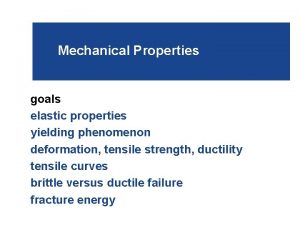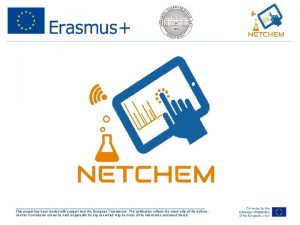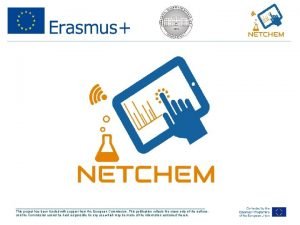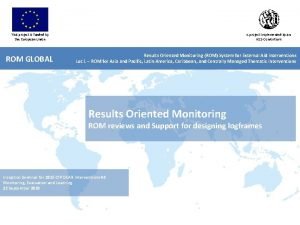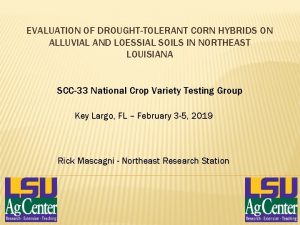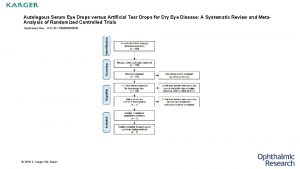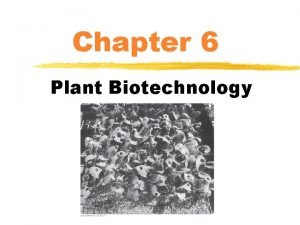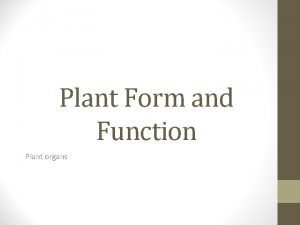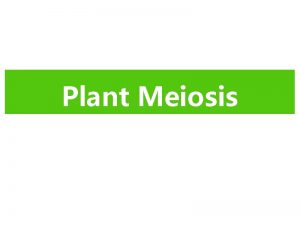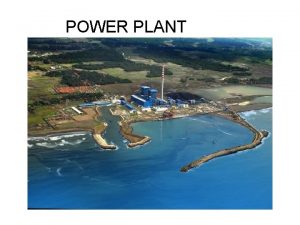DROPS DROughttolerant yielding Plant S DROPS EU funded






















- Slides: 22

DROPS DROught-tolerant yielding Plant. S DROPS EU funded project (2010 -2015) Coordinated by François Tardieu (INRA) Kick-off Meeting, Montpellier, 27 -29 August, 2010

DROPS - 8. 7 million euros - 15 partners - 10 public organisations - 5 companies - 11 countries - 4 continents

DROPS A common ground from the very beginning 1. Drought tolerance is driven and limited by physics H 2 O CO 2 H 2 O Water for CO 2 Water flux through plants Courtesy of F. Tardieu Water for heat Leaf temperature (°C) CO 2 low high transpiration 35 low high transpiration 25 15 0 12 time of day 0

DROPS A common ground from the very beginning 2. Any trait can have positive, negative or no consequence on yield. "IT DEPENDS" on the drought scenario (G x E x M) Consequence for the project: we want to explore a large number of scenarios - Network of experiments (field + platforms) - Modelling (simulation in 100 s scenarios) Courtesy of F. Tardieu

DROPS A common ground from the very beginning 3. It is worth exploring the natural genetic variability? Evolution/natural selection vs. modern agriculture Consequence for the project: exploring allelic effects • panels for association mapping • biparental crosses • introgression lines Courtesy of F. Tardieu

DROPS A common ground from the very beginning 4. Dissection + modelling, a key method Yield is too complex – particularly under different drought scenarios – for a direct association mapping study approach Need for targeting under controlled conditions less complex processes andfor traits Consequence thegenetically project: related to yield Genetic variability of - Processes: hydraulics, metabolism, transpiration, growth - Traits: leaf growth/architecture, root architecture, seed abortion, water use efficiency - Yield, components Processes assembled via models (statistical + functional)

DROPS Objectives Develop methods that increase the efficiency of breeding under water deficit -Novel indicators: “Identity cards” of genotypes: heritable traits genetically related to yield -Explore the natural variation: identify genomic regions that control key traits; assess the effects of a large allelic diversity under a wide range of scenarios -Develop models for estimating the comparative advantages of alleles and traits in fields with contrasting drought scenarios Courtesy of F. Tardieu

DROPS Three crops • Maize • Durum wheat • Bread wheat Comparative approaches: - common mechanisms? - common models? - common causal polymorphisms / QTLs? Courtesy of F. Tardieu

DROPS Four traits 1. Leaf growth / architecture CO 2 H 2 O - Genetic variability of growth response to water deficit? - Genetic variability of plant architecture and its change with water deficit? - Consequence of allelic diversity on yield depending on drought scenarios Courtesy of F. Tardieu - METHODS

DROPS Four traits 2. Root architecture • Genetic variability of architectural traits (not biomass) • Consequence of allelic diversity on water uptake and yield depending on drought scenarios • METHODS Courtesy of F. Tardieu

DROPS Four traits 3. Seed abortion Main source of progress in recurrent selection for yield in maize at CIMMYT (Tuxpeno Sequia) A main cause of yield loss in wheat METHODS Courtesy of F. Tardieu

DROPS Four traits 4. Water use efficiency A success story in wheat Wheat genotypes with high WUE. Positive effect in very dry environ only (avoidance) Rebetzke et al. 2002 CO 2 Yield gain (%) H 2 O Rainfall (mm) Courtesy of F. Tardieu

Dissection : genetic variability? Field Phenotyping platform + modelling: target more heritable traits Genetic analysis of heritable traits Tardieu & Tuberosa 2010, Current Opinion in Plant Biology Experiments + simulation agronomic value of alleles in climatic scenarios? Approach for phenotyping DROPS

Dissection DROPS Phenotyping platform: identify heritable traits of genotypes - amenable to genetic analysis - usable in modelling for predicting genotype performance in diverse climatic scenarios (NOT a means to measure yield and yield component, not reliable in pot experiments) Courtesy of F. Tardieu

Dissection: DROPS genetic variability of plant architecture t ò Architecture: which variables for a genetic and G x E analysis? Biomass = 0 Incident light * % intercepted * Radiation Use Efficiency (RUE) Digitizing Genetic / environmental analyses of parameters I II IV V QTL analysis

Dissection: DROPS genetic variability of leaf area/growth Biomass = ò t 0 Incident light * % Intercepted * Radiation Use Efficiency (RUE) * - Daily increase in leaf area at plant level - (tentative) daily increase in leaf length, response to water deficit and evaporative demand Courtesy of F. Tardieu

Dissection: DROPS genetic variability of seed abortion Imaging hidden organs? Yield = ò t 0 Incident light * % intercepted * Radiation Use Efficiency (RUE) * Harvest index

Model-assisted phenotyping: "hidden variables" DROPS Incident light, Intercepted plant architecture light Biomass } Radiation use efficiency Transpiration Biomass = ò } Stomatal conductance, water use efficiency t Incident light * % intercepted * Radiation Use Efficiency (RUE) 0 Courtesy of F. Tardieu

DROPS From phenotyping platforms to the field: modelling CO 2 H 2 O Heritable traits collected in phenotyping platform (max growth, architecture with responses to water deficit. . . ) Allow calculation of biomass accumulation in field situations with diverse scenarios: EFFECT OF ALLELIC DIVERSITY Yield = ò t 0 Incident light * % intercepted Radiation Use Efficiency (RUE) * Harvest index *

DROPS From phenotyping platforms to the field: modelling Climatic data virtual plant / genotype (with effect of QTLs) calculated feedbacks of plants on environment (e. g. soil depletion) Yield = ò } effect of allelic composition on plant performance t 0 Incident light * % intercepted Radiation Use Efficiency (RUE) * Harvest index Courtesy of F. Tardieu *

DROPS From phenotyping platforms to the field: modelling Virtual genotypes tested in 100 s of situation Input Model Output (100 years x management) Chenu et al. 2009 Genetics, Tardieu and Tuberosa 2010 Current Opinion Plant Biol

DROPS Coordinator: Francois Tardieu, INRA, France WP 1 Leader: Xavier Draye From phenotyping platforms to dry fields: development of new methods WP 2 Leader: Alain Charcosset Identification of genes and QTLs for drought tolerance WP 3 Leader: Graeme Hammer Comparative advantages of alleles and traits on crop performance WP 4 Leader: Bjorn Usadel Data collection, database, statistic and bioinformatic tool WP 5 Leader: Roberto Tuberosa Dissemination and technology transfer WP 6 Leader: Olga Mackre Project management
 Turn-yielding cues
Turn-yielding cues Yielding phenomenon
Yielding phenomenon Pp
Pp What is tension member
What is tension member Self funded vs fully insured
Self funded vs fully insured This project is funded by the european union
This project is funded by the european union This project is funded by the european union
This project is funded by the european union Co-funded by the erasmus+ programme of the european union
Co-funded by the erasmus+ programme of the european union This project is co-funded by the european union
This project is co-funded by the european union This project has been funded by
This project has been funded by This project is funded by the european union
This project is funded by the european union This project has been funded by contributions
This project has been funded by contributions Co-funded by the erasmus+ programme of the european union
Co-funded by the erasmus+ programme of the european union Co-funded by the erasmus+ programme of the european union
Co-funded by the erasmus+ programme of the european union This project has been funded by
This project has been funded by This project is funded by the european union
This project is funded by the european union Self-funded pso
Self-funded pso Most voluntary health agencies operate at the
Most voluntary health agencies operate at the This project is funded by the european union
This project is funded by the european union This project has been funded by
This project has been funded by National general benefits solutions
National general benefits solutions This project is funded by the european union
This project is funded by the european union Objective of plant breeding
Objective of plant breeding

